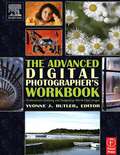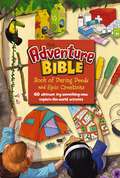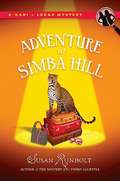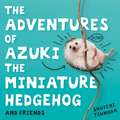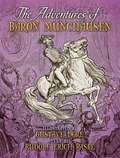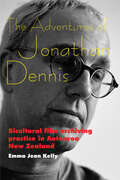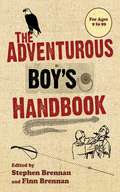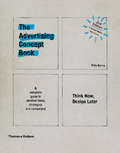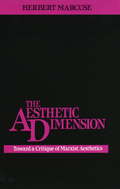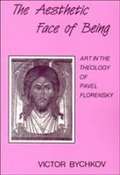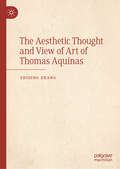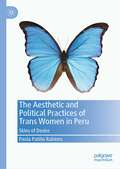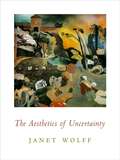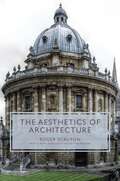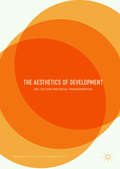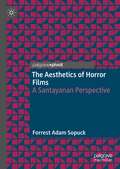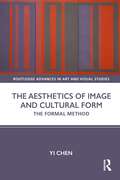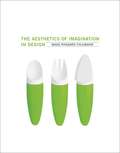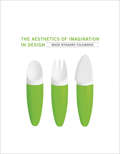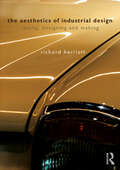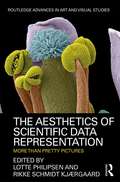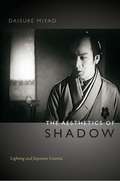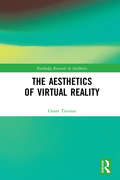- Table View
- List View
The Advanced Digital Photographer's Workbook: Professionals Creating and Outputting World-Class Images
by Editor Yvonne J. ButlerTHE ADVANCED DIGITAL PHOTOGRAPHER'S WORKBOOK is packed full of real-world yet incredibly practical and effective solutions to move digital photographers to a new level of performance. Contributors include twelve world-class professional digital photographers who share their tips and tricks. The authors provide details to move you beyond the basics of capture, processing and output to more sophisticated workflow functions and techniques that will help you create world-class images. They cover rigorous yet easy-to-understand approaches to: capture a great image in black-and-white and color, correct color, calibrate and set up systems properly, creatively manipulate and enhance the image, and produce an excellent print or output of the image. Contributors: Steve Anchell, Stephen Burns, Yvonne Butler, Eric Cheng, Joe Farace, Lou Jones, Rick Sammon, George Schaub, Jeremy Sutton, Tony Sweet, Taz Tally, Eddie Tapp
The Adventure Bible Book of Daring Deeds and Epic Creations: 60 ultimate try-something-new, explore-the-world activities (Adventure Bible)
by ZondervanBegin your adventure here! The Adventure Bible Book of Daring Deeds and Epic Creations: 60 Ultimate Try-Something-New, Explore-the-World Activities contains lessons on knot tying, writing coded letters, building tree swings, and more, perfect for kids ages 8 and up. Boys and girls will love this interactive book filled with step-by-step guides and fun, full-color illustrations, and parents will enjoy the key verses and biblical takeaways that make this the perfect companion to the NIV Adventure Bible, the #1 Bible for kids. From easy, do-it-yourself crafts to fun outdoor activities, this book will show kids how to find adventure indoors and out.Adventures include:Top-secret coded lettersGeocaching funIdentifying animal tracksCamping like a proLearning sign languageBible arts and craftsAnd more!
The Adventure at Simba Hill
by Susan RunholtBest friends Kari and Lucas are thrilled to go on safari in Africa. They're fascinated by the lions, giraffes, and zebras. Even more intriguing to Kari is the cave where her uncle and other archaeologists have discovered artwork from thousands of years ago. But when some of the ancient artifacts are stolen, Kari and Lucas are thrust into an art mystery as compelling as any they've faced before-only, surrounded by wild animals, far more dangerous. Fast-paced writing, suspenseful action, spunky protagonists, and a fascinating African setting combine for another winning Kari and Lucas mystery.
The Adventures of Azuki the Miniature Hedgehog and Friends
by Shuichi TsunodaAzuki, the much-loved Japanese miniature hedgehog who became an Instagram sensation, with over 407,000 followers, sadly died on the 20th January 2019. His daughter, Monaka, born on the 8th April 2018, is following in her father's footsteps. This is a collection of adorable photographs of Azuki, Monaka and their friends baking, playing pool, reading and enjoying other mini-adventures. In his heyday, Azuki was a mainstay of Bored Panda and was featured on Time magazine's website. New York magazine called him 'the only pure thing left in this world', and he appeared in the pages of the Independent and the Sun. He also had thousands of fans in Australia and New Zealand. <P><P>The Adventures of Azuki the Miniature Hedgehog and Friends is the perfect gift book for the animal lover in your life who is over dogs and cats and into hedgehogs, for anyone who clicks on Cute Overload for a break from the news, and for Azuki and daughter Monaka's still-growing fan base.' <P><P>In Japan, hedgehogs are thought to be a type of rat, and generally don't have a good image,' Tsunoda explains. 'By publishing a photo book, I aim to raise awareness.'
The Adventures of Baron Munchausen
by Rudolf Erich Raspe Gustave DoréA certain eighteenth-century German noble ventured abroad for military service and returned with a series of amusingly outrageous stories. Baron Munchausen's astounding feats included riding cannonballs, traveling to the Moon, and pulling himself out of a bog by his own hair. Listeners delighted in hearing about these unlikely adventures, and in 1785, the stories were collected and published as Baron Munchausen's Narrative of his Marvellous Travels and Campaigns in Russia. By the nineteenth century, the tales had undergone expansions and transformations by several notable authors and had been translated into many languages.A figure as colorful as the Baron naturally appeals to the artistic imagination, and he has been depicted in numerous works of art. His definitive visual image, however, belongs to Gustave Doré. Famed for his engravings of scenes from the Bible, the Divine Comedy, Don Quixote, and other literary classics, Doré created theatrical illustrations of the Baron's escapades that perfectly re-create the stories' picaresque humor.
The Adventures of Jonathan Dennis: Bicultural Film Archiving Practice in Aotearoa New Zealand
by Emma Jean KellyJonathan Dennis (1953-2002), was the creative and talented founding director of the New Zealand Film Archive. As a Pakeha (non-Maori/indigenous New Zealander) with a strong sense of social justice, Dennis became a conduit for tension and debate over the preservation and presentation of indigenous and non-indigenous film archival materials from the time the Archive opened in 1981. His work resulted in a film archive and curatorship practice which differed significantly from that of the North American and European archives he originally sought to emulate. He supported a philosophical shift in archival practice by engaging indigenous peoples in developing creative and innovative exhibitions from the 1980s until his death, recognizing that much of the expertise required to work with archival materials rested with the communities outside archival walls. This book presents new interviews gathered by the author, as well as an examination of existing interviews, films and broadcasts about and with Jonathan Dennis, to consider the narrative of a life and work in relation to film archiving.
The Adventurous Boy's Handbook: For Ages 9 to 99
by Stephen Brennan Finn BrennanStephen and Finn Brennan, father and son, know what's really fun for boys of all ages. The Adventurous Boy's Handbook is filled with idea, explanations, and instructions for games, sports, and activities ranging from stargazing, baseball, and animal tracking to sign language, magic and archaeology. Included in this invaluable book: step-by-step guides to pitching a tent, building an ice-yacht, shooting a bow and arrow, and fending off a shark attack. The Adventurous Boy's Handbook promises endless days and nights filled with orienteering, cowboying, sailing, and so much more. No boy should leave home without it!
The Advertising Concept Book: Think Now, Design Later
by Pete BarryThe classic guide to creative ideas, strategies, and campaigns in advertising, now in a revised and updated third edition <p><p> In creative advertising, no amount of glossy presentation will improve a bad idea. That’s why this book is dedicated to the first and most important lesson: concept. <p> Structured to provide both a complete course on advertising and a quick reference on specific industry topics, it covers every aspect of the business, from how to write copy and learn the creative process to how agencies work and the different strategies used for all types of media. This edition has been updated to include expanded chapters on interactive advertising and integrative advertising, a new chapter on branded social media, and fifty specially drawn new roughs of key campaigns. <p> Pete Barry outlines simple but fundamental rules about how to “push” an ad to turn it into something exceptional, while exercises throughout help readers assess their own work and that of others. Fifty years’ worth of international, award-winning ad campaigns—in the form of over 450 “roughs” specially produced by the author, fifty of which are new to this edition—also reinforce the book’s core lesson: that a great idea will last forever.
The Aesthetic Dimension
by Herbert MarcuseDeveloping a concept briefly introduced in Counterrevolution and Revolt, Marcuse here addresses the shortcomings of Marxist aesthetic theory and explores a dialectical aesthetic in which art functions as the conscience of society. Marcuse argues that art is the only form or expression that can take up where religion and philosophy fail and contends that aesthetics offers the last refuge for two-dimensional criticism in a one-dimensional society.
The Aesthetic Face of Being: Art in the Theology of Pavel Florensky
by Victor BychkovFr Pavel Florensky (1882-1937) was a talented figure of Russia's Silver Age, whose interests included mathematics and engineering, philosophy, theology and linguistics. Patriotic and religious, he laboured to serve his country, even under Communism, without, however, renouncing his priesthood. He was ultimately arrested, imprisoned and sentenced to death by firing squad.
The Aesthetic Thought and View of Art of Thomas Aquinas
by Zhiqing ZhangThis book examines Aquinas's aesthetic thought and view of art within the broader context of medieval aesthetics and the history of aesthetic development, emphasizing its profound influence on later aesthetics. The book not only elaborates on Aquinas's efforts to establish coherence between faith and reason, the transcendent and empirical, as well as its significance, but also discusses the main contents and characteristics of Aquinas's aesthetic thought from the three aspects of the ontology of beauty, the theory of form, and the theory of experience. By examining Aquinas's aesthetic thought and view of art in relation to modern aesthetics and twentieth-century aesthetics, this book reveals the immense vitality of Aquinas's aesthetic thought.
The Aesthetic and Political Practices of Trans Women in Peru: Skins of Desire
by Paola Patiño RabinesThis book explores the political-aesthetic practices of transgender women in Lima, Peru, and how they use these to survive and fight for recognition and full citizenship, through drawing on ethnographic research and on decolonial feminist and aesthetic theories. Chapters analyze how the vulnerability and precariousness of trans women coexist with modes of feminist agency, resistance and resilience, as well as with proposals for political action to transform a heteropatriarchal society toward a more diverse and accepting one. Finally, the author draws on the Viennese artist Friedensreich Hundertwasser’s metaphor of the five skins, whereby the first skin is the epidermis; the second is the clothes; the third is the house; the fourth is identity, which refers to primary socialization spaces such as the neighbourhood; and the fifth is the world environment. The author uses this metaphor to analyze the corporal practices of trans women in a cumulative way, paying special attention to the different stages of their lives, to those skins that embody and accompany them from childhood to adulthood.This book will be of interest to scholars of transgender studies, decolonial feminist studies, and aesthetic, particularly those with a focus on gender and sexuality in Latin America.
The Aesthetics Of Uncertainty (Columbia Themes In Philosophy, Social Criticism, And The Arts Ser.)
by Janet WolffThe Aesthetics of Architecture
by Roger ScrutonA landmark account of architectural theory and practice from acclaimed philosopher Roger ScrutonArchitecture is distinguished from other art forms by its sense of function, its localized quality, its technique, its public and nonpersonal character, and its continuity with the decorative arts. In this important book, Roger Scruton calls for a return to first principles in contemporary architectural theory, contending that the aesthetic of architecture is, in its very essence, an aesthetic of everyday life. Aesthetic understanding is inseparable from a sense of detail and style, from which the appropriate, the expressive, the beautiful, and the proportionate take their meaning. Scruton provides incisive critiques of the romantic, functionalist, and rationalist theories of design, and of the Freudian, Marxist, and semiological approaches to aesthetic value.In a new introduction, Scruton discusses how his ideas have developed since the book's original publication, and he assesses the continuing relevance of his argument for the twenty-first century.
The Aesthetics of Development
by John Clammer Ananta Kumar GiriThrough a unique range of theoretical and practical case studies, this collection considers the relationship between the arts (understood as the visual arts, crafts, theatre, dance, and literature) and development, creating both a bridge between them that is rarely explored and filling in concrete ways the content of the "culture" part of the equation "culture and development". It includes manifestations of culture and the ways in which they relate to development, and in turn contribute to such pressing issues as poverty alleviation, concern for the environment, health, empowerment, and identity formation. It shows how the arts are an essential part of the concrete understanding of culture, and as such a significant part of development thinking - including the development of culture, and not only of culture as an instrumental means to promote other development goals.
The Aesthetics of Horror Films: A Santayanan Perspective
by Forrest Adam SopuckThis book analyzes the nature and functions of horror films from the vantage of a theoretical reconstruction of George Santayana’s account of beauty. This neo-Santayanan framework forms the conceptual backdrop for a new model of horror’s aesthetic enjoyment, the nature of which is detailed through the examination of plot, cinematic, and visual devices distinctive of the popular genre. According to this model, the audience derives pleasure from the films through confronting the aversive scenarios they communicate and rationalizing a denial of their personal applicability. The films then come to embody these acts of self-assertion and intellectual overcoming and become objects of pride. How horror films can acquire necropolitical functions within the context of abusive systems of power is also clarified. These functions, which exploit the power of anti-tragedy, downward social comparison, or vicarious emotion, work to remediate aggressive, ascetic, or revolutionary impulses in ways that are not injurious to the status quo. This book champions horror as a source of self-empowerment and unmitigated beauty, but also attests to the potential social harms of the genre.
The Aesthetics of Image and Cultural Form: The Formal Method (Routledge Advances in Art and Visual Studies)
by Yi ChenOffering an alternative mode of visual cultural analysis to the prevalent discursive model, this book proposes to situate analysis of Image within ‘formal’ analyses of culture experience.Specifically, the discussion draws on theories of affective aesthetics with the view of addressing the sensual form of culture (i.e. ‘cultural form’). Therefore, the volume puts forward a mode of formalist analysis in visual cultural research which takes purchase on the idea of ‘cultural form’. A continuum of formalist attention between Image analysis (visual media, industrial design) and probing of ‘cultural forms’ establishes the theoretical underpinning of the book. These concepts are expounded through a case study which looks at formal experimentations and debates arising from 1960s avant-garde artistic practices in London.
The Aesthetics of Imagination in Design
by Mads Nygaard FolkmannIn The Aesthetics of Imagination in Design, Mads Folkmann investigates design in both material and immaterial terms. Design objects, Folkmann argues, will always be dual phenomena -- material and immaterial, sensual and conceptual, actual and possible. Drawing on formal theories of aesthetics and the phenomenology of imagination, he seeks to answer fundamental questions about what design is and how it works that are often ignored in academic research. Folkmann considers three conditions in design: the possible, the aesthetic, and the imagination. Imagination is a central formative power behind the creation and the life of design objects; aesthetics describes the sensual, conceptual, and contextual codes through which design objects communicate; the concept of the possible -- the enabling of new uses, conceptions, and perceptions -- lies behind imagination and aesthetics. The possible, Folkmann argues, is contained as a structure of meaning within the objects of design, which act as part of our interface with the world. Taking a largely phenomenological perspective that reflects both continental and American pragmatist approaches, Folkmann also makes use of discourses that range from practice-focused accounts of design methodology to cultural studies. Throughout, he offers concrete examples to illustrate theoretical points. Folkmann's philosophically informed account shows design -- in all its manifestations, from physical products to principles of organization -- to be an essential medium for the articulation and transformation of culture.
The Aesthetics of Imagination in Design (Design Thinking, Design Theory)
by Mads Nygaard FolkmannA theoretically informed investigation that relates the philosophies of aesthetics and imagination to understanding design practice.In The Aesthetics of Imagination in Design, Mads Folkmann investigates design in both material and immaterial terms. Design objects, Folkmann argues, will always be dual phenomena—material and immaterial, sensual and conceptual, actual and possible. Drawing on formal theories of aesthetics and the phenomenology of imagination, he seeks to answer fundamental questions about what design is and how it works that are often ignored in academic research.Folkmann considers three conditions in design: the possible, the aesthetic, and the imagination. Imagination is a central formative power behind the creation and the life of design objects; aesthetics describes the sensual, conceptual, and contextual codes through which design objects communicate; the concept of the possible—the enabling of new uses, conceptions, and perceptions—lies behind imagination and aesthetics. The possible, Folkmann argues, is contained as a structure of meaning within the objects of design, which act as part of our interface with the world. Taking a largely phenomenological perspective that reflects both continental and American pragmatist approaches, Folkmann also makes use of discourses that range from practice-focused accounts of design methodology to cultural studies. Throughout, he offers concrete examples to illustrate theoretical points. Folkmann's philosophically informed account shows design—in all its manifestations, from physical products to principles of organization—to be an essential medium for the articulation and transformation of culture.
The Aesthetics of Industrial Design: Seeing, Designing and Making
by Richard HerriottThis textbook introduces design students to key principles of three-dimensional form, bridging aesthetics and practical design objectives. It explores how we see and what it is that characterises visually appealing and satisfactory design. Written by an experienced designer, educator and researcher, The Aesthetics of Industrial Design equips students with the knowledge and understanding of how aesthetically superior design is distinct from lesser work. It explains the key principles and concepts they can incorporate into their own designs, encourages readers to investigate and experiment with real design problems and enables them to verbally communicate their design intentions. The book prompts readers to critically reflect on their work and surroundings. Through numerous clear examples and illustrated case studies, which are guided by cognitive science and the application of aesthetic theory, the book brings together the basic aspects of design as form-giving. It explores the balance of function, material and appearance in detail and explains the reasons for common aesthetic faults and how to avoid them. Aimed at undergraduate- and postgraduate-level students within the design fields, this book reveals the secrets to aesthetically successful products that readers can take from education into future practice.
The Aesthetics of Rule and Resistance: Analyzing Political Street Art in Latin America (Protest, Culture & Society #29)
by Lisa BogertsEffective visual communication has become an essential strategy for grassroots political activists, who use images to publicly express resistance and make their claims visible in the struggle for political power. However, this “aesthetics of resistance” is also employed by political and economic elites for their own purposes, making it increasingly difficult to distinguish from the “aesthetics of rule.” Through illuminating case studies of street art in Buenos Aires, Bogotá, Caracas, and Mexico City, The Aesthetics of Rule and Resistance explores the visual strategies of persuasion and meaning-making employed by both rulers and resisters to foster self-legitimization, identification, and mobilization.
The Aesthetics of Rule and Resistance: Analyzing Political Street Art in Latin America (Protest, Culture & Society #29)
by Lisa BogertsEffective visual communication has become an essential strategy for grassroots political activists, who use images to publicly express resistance and make their claims visible in the struggle for political power. However, this “aesthetics of resistance” is also employed by political and economic elites for their own purposes, making it increasingly difficult to distinguish from the “aesthetics of rule.” Through illuminating case studies of street art in Buenos Aires, Bogotá, Caracas, and Mexico City, The Aesthetics of Rule and Resistance explores the visual strategies of persuasion and meaning-making employed by both rulers and resisters to foster self-legitimization, identification, and mobilization.
The Aesthetics of Scientific Data Representation: More than Pretty Pictures (Routledge Advances in Art and Visual Studies)
by Rikke Schmidt Kjærgaard Lotte PhilipsenHow can cartoon images aid in understanding bacterial biological processes? What prompts physicists to blur their images before showing them to biologists? Considering that the astronomer’s data consists solely of invisible, electric impulses, what is the difference between representing outer space as images, graphs, or sound? How does a work of contemporary art differ from a scientific image if we cannot visually distinguish between the two? How do aesthetics, art, and design influence scientific visualization and vice versa? This volume asks critically important questions about scientific data representation and provides significant insights to a field that is interdisciplinary in its very core. The authors investigate scientific data representation through the joint optics of the humanities and natural sciences. The volume particularly appeals to scholars in visual and aesthetic studies, data visualization, scientific illustration, experience culture, information design, and science communication.
The Aesthetics of Shadow: Lighting and Japanese Cinema
by Daisuke MiyaoIn this revealing study, Daisuke Miyao explores "the aesthetics of shadow" in Japanese cinema in the first half of the twentieth century. This term, coined by the production designer Yoshino Nobutaka, refers to the perception that shadows add depth and mystery. Miyao analyzes how this notion became naturalized as the representation of beauty in Japanese films, situating Japanese cinema within transnational film history. He examines the significant roles lighting played in distinguishing the styles of Japanese film from American and European film and the ways that lighting facilitated the formulation of a coherent new Japanese cultural tradition. Miyao discusses the influences of Hollywood and German cinema alongside Japanese Kabuki theater lighting traditions and the emergence of neon commercial lighting during this period. He argues that lighting technology in cinema had been structured by the conflicts of modernity in Japan, including capitalist transitions in the film industry, the articulation of Japanese cultural and national identity, and increased subjectivity for individuals. By focusing on the understudied element of film lighting and treating cinematographers and lighting designers as essential collaborators in moviemaking, Miyao offers a rereading of Japanese film history.
The Aesthetics of Virtual Reality (Routledge Research in Aesthetics)
by Grant TavinorThis is the first book to present an aesthetics of virtual reality media. It situates virtual reality media in terms of the philosophy of the arts, comparing them to more familiar media such as painting, film and photography. When philosophers have approached virtual reality, they have almost always done so through the lens of metaphysics, asking questions about the reality of virtual items and worlds, about the value of such things, and indeed, about how they may reshape our understanding of the "real" world. Grant Tavinor finds that approach to be fundamentally mistaken, and that to really account for virtual reality, we must focus on the medium and its uses, and not the hypothetical and speculative instances that are typically the focus of earlier works. He also argues that much of the cultural and metaphysical hype around virtual reality is undeserved. But this does not mean that virtual reality is illusory or uninteresting; on the contrary, it is significant for the altogether different reason that it overturns much of our understanding of how representational media can function and what we can use them to achieve. The Aesthetics of Virtual Reality will be of interest to scholars and advanced students working in aesthetics, philosophy of art, philosophy of technology, metaphysics, and game studies.
